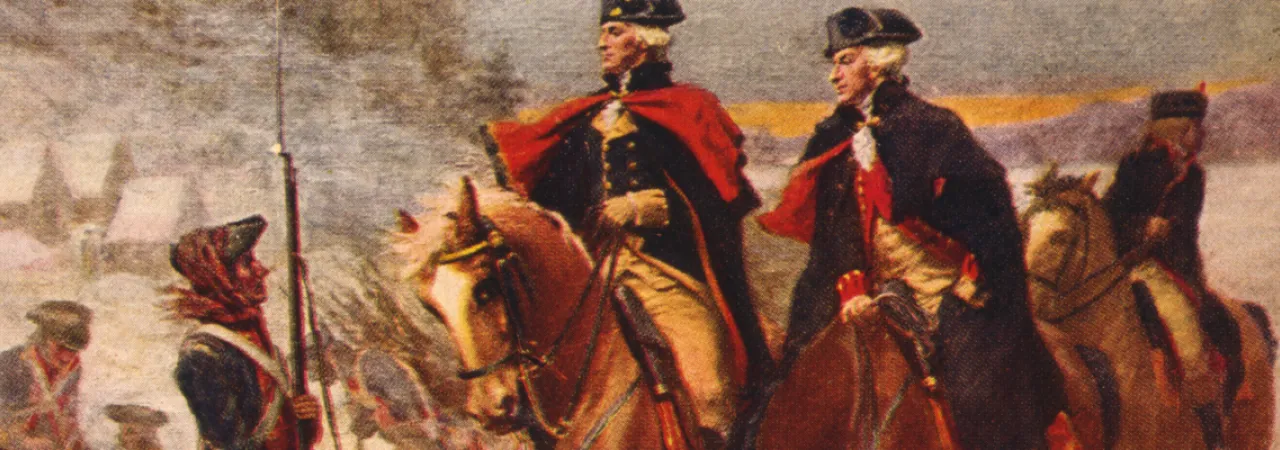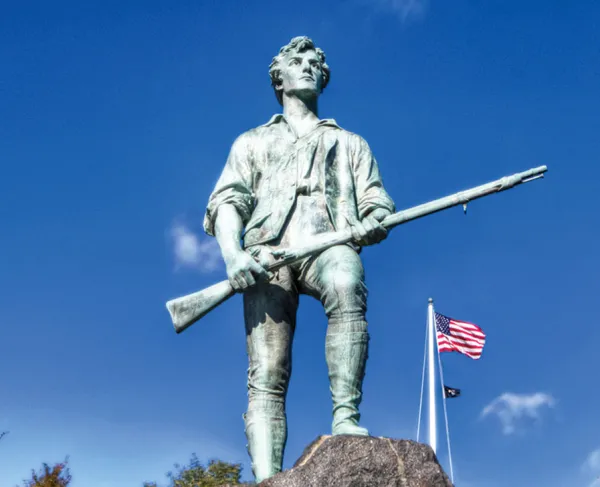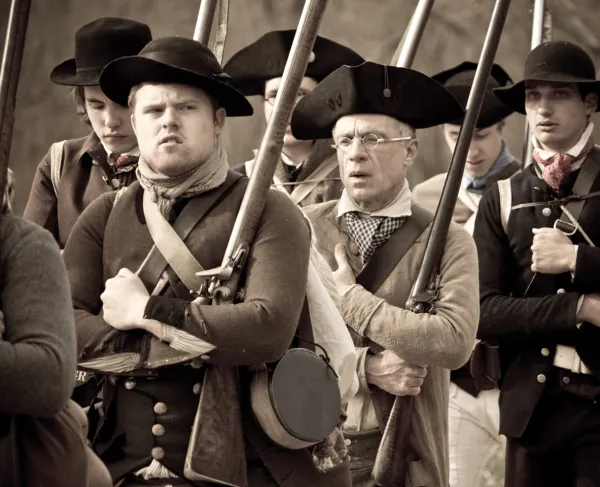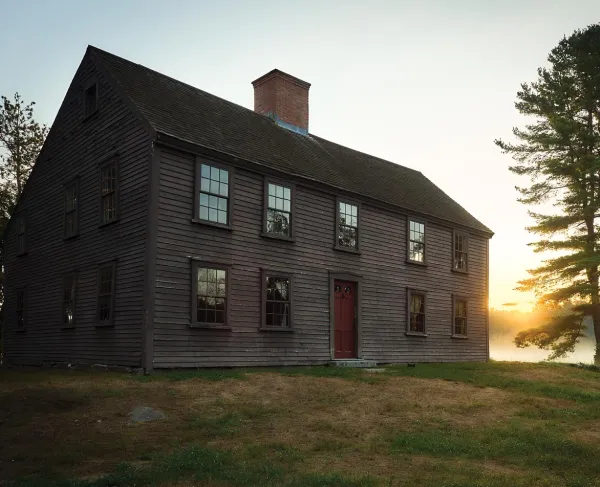“England is the natural enemy of France…The invariable and most cherished purpose in her polities has been, if not the destruction of France, at least her overthrow, her humiliation, and her ruin…This condition of things, as well as the care which France is bound to take care of its own preservation, authorize and even invites her to seize every possible opportunity to reduce the power and the greatness of England.”
Charles Gravier, comte de Vergennes
On October 17, 1781, the great siege guns at Yorktown, Virginia fell silent as the surrender negotiations began. The once formidable force commanded by Lord Cornwallis was surrounded on both land and sea, with little hope of reinforcement or escape. His surrender two days later marked the end of significant land operations in America and the de facto recognition of American independence. It also marked the culmination of years of Franco-American cooperation aimed at defeating the British. Motivated by their desire to humiliate the British, the French provided the necessary support that made American victory a possibility. This support came in many forms – covert supply of war materiel, individual volunteers, diplomatic support in Europe, and eventually a full-fledged military alliance. Without the committed support of France, it is difficult to see how the revolutionary cause could have been sustained in the face of British military power.
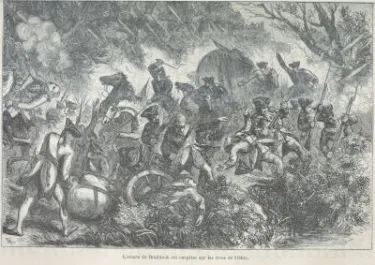
The American Revolution occurred during a period that some historians refer to as the “Second Hundred Years War” between France and Britain. Like the first conflict of that name, it was a period of intermittent warfare and political and economic rivalry between the two powers. This period of conflict began in 1698 with the War of the Grand Alliance (1689-1697), where Britain joined a coalition to rein in the ambitious Louis XIV and continued throughout much of the 18th century. With each war, the scope of the fighting extended well beyond the boundaries of Europe as British and French colonies became theaters of war. While most of the colonial wars of the period began as European conflicts, the opposite was true of the Seven Years War, or French and Indian War. A backwoods skirmish initiated by the young George Washington would help spark an international war that would rage across Europe, the Americas, Asia, and Africa. Britain’s overwhelming victory in 1763 would assert her dominance as the world’s premier colonial power but would also sow the seeds of American independence.
France suffered a humiliating setback in the Seven Years War. In Europe, her allies had been stymied by the Prussians under Frederick the Great. The French navy was crippled by Britain at the Battle of Quiberon Bay. In India, the British broke the French hold on the subcontinent, while in North America the entirety of French Canada and Louisiana were lost. These commercial and colonial losses, in turn, exacerbated France’s strained finances. As a result, both the French government and the public eagerly looked for a way to avenge their loss and to erode British power. In the decade following the end of the Seven Years War, the French rebuilt their navy, reorganized and modernized their army, and strengthened their diplomatic connections in preparation for the next war. As colonial resistance to British authority gained traction in the 1760s and early 1770s the French saw the opportunity that they had been waiting for.
French interest in the revolutionary cause began even before shots were fired at Lexington and Concord. In the 1760s Étienne François, duc de Choiseul, Chief Minister to the King of France, sent agents to America to gauge the potential strength of the colonies and their dissatisfaction with Britain. They reported favorably on the growing industrial and economic power of the colonies and predicted that there would soon be a rupture with the mother country. One observed that the colonists at all levels exhibited a spirit of independence, particularly those in Boston, who held “the same opinion as in the provinces I already visited, only expressed with greater violence and acrimony.”
French interest in America continued to grow under the direction of Charles Gravier, comte de Vergennes, who became the French Foreign Minister in 1774. When war broke out in the spring of 1775, Vergennes immediately moved to take advantage of the situation without declaring an open war with Britain. He approved of a plan put forward by the influential polymath Pierre de Beaumarchais to secretly funnel funds and supplies to the rebellious colonists through the creation of a shell company known as Roderigue Hortalez and Company. Together with Luis de Unzaga y Amézaga, the Spanish Governor of Louisiana, Beaumarchais used the fictitious company to move tens of thousands of desperately needed muskets, uniforms, tents, and other supplies, as well as tons of gunpowder and vast sums of money to the Americans. These supplies proved critical in keeping Washington’s struggling army in the field through 1777.
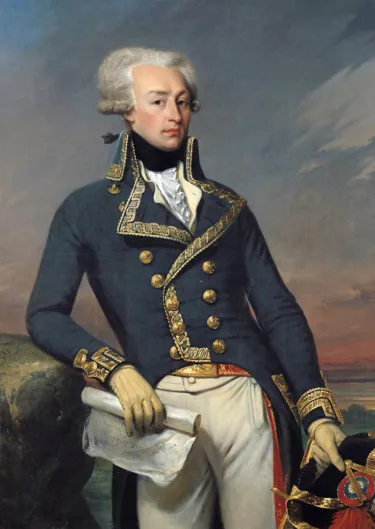
While covert aid flowed into the colonies an increasing number of French volunteers arrived as well. These men were not acting in any official capacity, but instead were brought into the conflict by personal motivations. Some were steeped in the enlightenment rhetoric of liberty and saw the American war as the beginnings of a new era in rational government. Others were motivated by the promise of wealth, fame, and glory that military action could bring. The most famous volunteer was Gilbert du Motier, the Marquis de Lafayette, who arrived in the colonies at the age of 19 eager to find glory in the American cause. He quickly rose through the ranks of the army, attaining a Major General’s commission and earning a place of honor among Washington’s military “family.” The young Frenchman would play a decisive role in the campaign that culminated at Yorktown in 1781. Lafayette was far from the only Frenchman to offer his services to the Continental army, however. Through the early years of the war the American diplomats in Paris – Benjamin Franklin, Silas Deane, and Arthur Lee – were bombarded by adventurers looking to join the American cause. Some rendered invaluable service, such as Louis Duportail, who served as the chief engineer for the Continental Army from 1777 to 1783. Others, like Brigadier General Matthias de Fermoy, proved incompetent, and many American officers resented their promotion.
The nature of French aid changed decisively in 1778 with the signing of an official treaty of alliance between France and the United States. What had been a covert operation to aid the rebels was now an open military alliance, and France officially joined the war and brought its full military might against Britain. The decision to ally with the American rebels had been hotly contested in the halls of Versailles. Although the King and his ministers were happy to weaken their rivals, the memory of the defeat of 1763 was still very fresh. Many feared that French finances would be unable to bear the cost of renewed war. To convince the French crown to declare war, the Americans needed to prove that they were able to resist the British on the battlefield. This was accomplished in the fall of 1777 when the victorious Americans captured a British army following the Battles of Saratoga. The Alliance was signed in February 1778, and when news reached Washington’s army at Valley Forge in May the General ordered his army to assemble in celebration. The Continental troops fired salutes and cheered “Long Live the King of France” in recognition.
French assistance was quick to arrive in America, but early Franco-American operations proved unsuccessful. In the summer of 1778, a French fleet commanded by Charles d'Estaing arrived off British-held New York carrying several thousand troops. Unable to enter the harbor and attack the city, he turned to Newport, Rhode Island, where he hoped to combine with the Americans and drive the British out. Poor weather and worse cooperation between the Allies doomed the attack at Newport, and d’Estaing subsequently sailed for the Caribbean. He returned in September 1779 to assist with the failed attempt to recapture Savannah, Georgia – a debacle that resulted in one of the costliest defeats of the war.
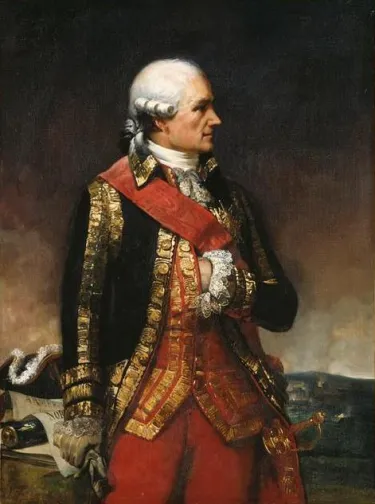
Franco-American prospects improved dramatically in 1780, when, nearly 6,000 French soldiers landed in Rhode Island under the command of Jean-Baptiste Donatien de Vimeur, comte de Rochambeau. A thoroughly professional officer, Rochambeau worked diligently to cultivate a friendly relationship with George Washington, which allowed for close cooperation between the Continentals and the Expédition Particulière. Nowhere was this more evident than during the campaign to catch Cornwallis at Yorktown. Rochambeau deferred to Washington on strategic matters and moved quickly to Virginia in support of the Americans. Cornwallis’s fate was then sealed by the arrival of a French fleet off the Virginia Capes, cutting him off from by sea. French heavy artillery pounded the British entrenchments, while French soldiers assaulted British outposts. Without this support, it is unlikely that Washington could have effectively trapped the British and forced their surrender.
The French alliance also proved vital beyond North America, as the war spread across the globe. By 1779 France’s ally Spain entered the war, and soon afterward the British declared war on the Netherlands as well. Now forced to defend their far-flung colonies and the home islands, British military, and financial resources were spread thin. Fighting raged for the control of the valuable sugar islands of the West Indies, while the French and Spanish besieged Gibraltar for over three years. Further afield, the war led to renewed fighting over the fate of India, where the final battle of the conflict would not be fought until June 1780, at the naval Battle of Cuddalore. With the sparking of a worldwide conflict, the war in America became a sideshow, prompting the British government to scale back their attempts to win back the 13 colonies to preserve the rest of the empire.
Although the French were instrumental in helping the Americans achieve their independence, they emerged from the war with little to show for it. The American peace delegation went behind Vergennes’s back and dealt directly with the British. In a separate peace negotiation, the French received some small concessions, including the island of Tobago and some posts in west Africa. Within a decade the Americans signed favorable trade treaties with Britain, undercutting the promise of French commercial ties with the new nation. Most importantly, French involvement in the American Revolution strained France’s finances, exactly as many had predicted. The economic collapse that followed proved to be a major factor in the coming of the French Revolution in 1789. Many of the veterans of the American war, including Lafayette and Rochambeau, would go on to play important roles in conflicts that followed, and the “Second Hundred Years War” raged on until the final defeat of Napoleon in 1815.
Further Reading:
- America's First Ally: France in the Revolutionary War By: Norman Desmarais
- Brothers at Arms: American Independence and the Men of France and Spain Who Saved It By: Larrie D. Ferreiro
- How the French Saved America: Soldiers, Sailors, Diplomats, Louis XVI, and the Success of a Revolution By: Tom Shactman
Related Battles
389
8,589
93
300
330
1,135
